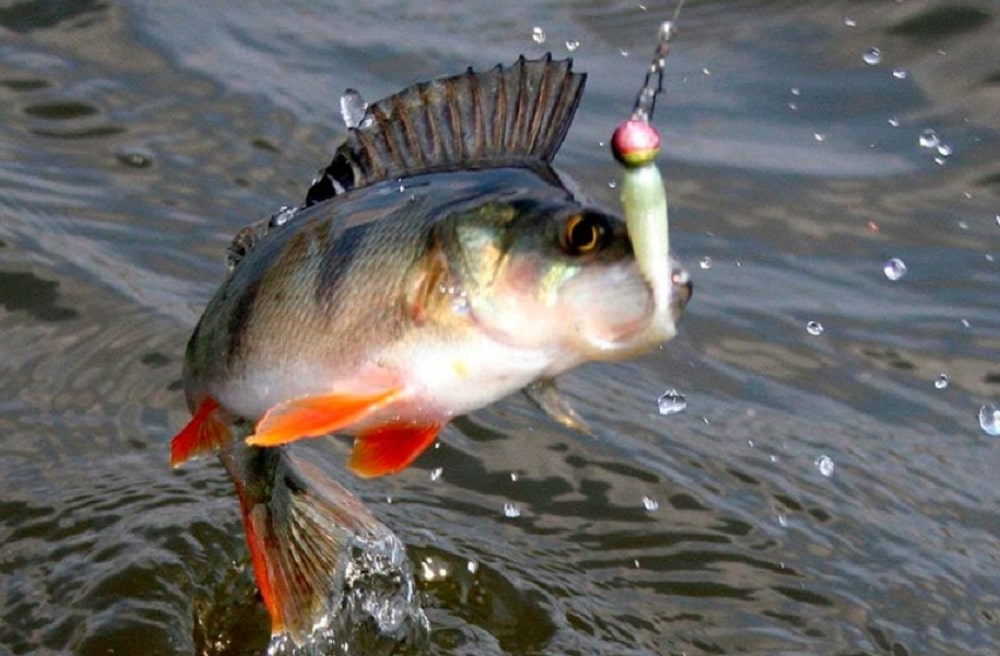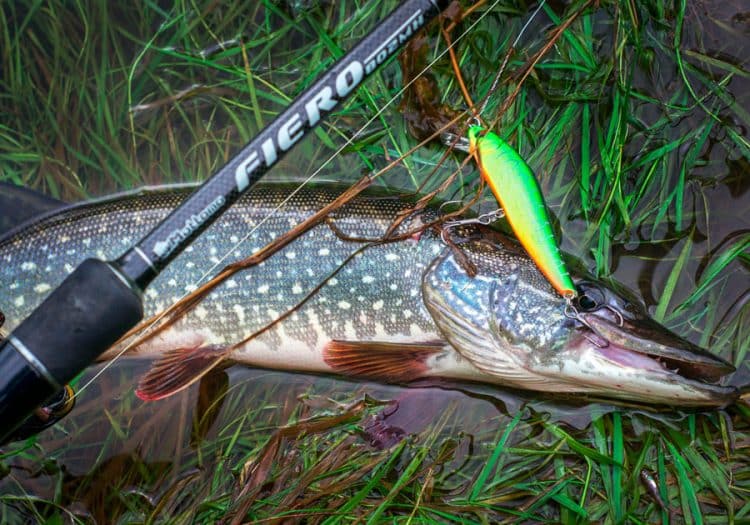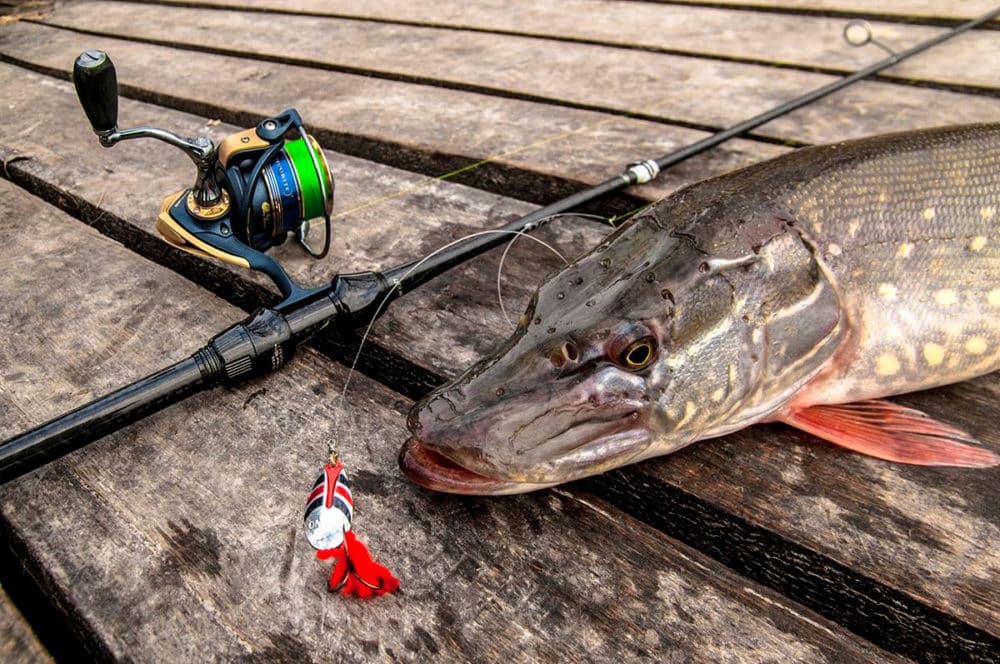There are inveterate wobblers, zhelezyatniki, silicones and generalists – it is impossible to make someone, all approaches are good. But fishing with jig lures definitely has its own characteristics, nuances and philosophy. And catching perch on a jig is notable for its excitement and a variety of used silicone lures, as well as methods of rigging “rubber” and their feeding. Depending on the size and mood of the fish, the fishing conditions and the lures used, the method of spinning fishing for striped robber with silicone can be radically different. Let’s walk through the main basics, without which successful fishing can only be accidental.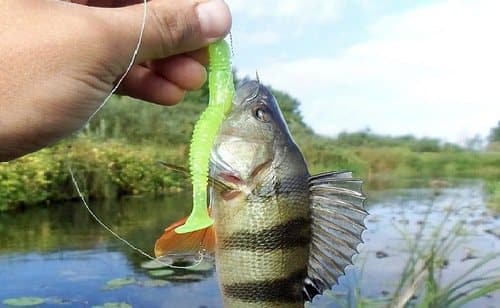
- Tackle used
- Ultralight “sports” tackle
- Tackle for perch “250+ grams”
- The best silicone baits for perch: general characteristics, specific vibrotails, twisters, worms, crustaceans, octopuses and slugs
- General recommendations for selection
- Top 10 best vibrating tails for perch
- Best perch twisters: top 10
- The best crustaceans
- Catchy worms / slugs
- Nymphs
- Octopuses
- Jig equipment for perch
- Spaced snap
- Drop shot
- Texas snap on the perch
- Carolina perch rig
- Jig-rig ( tokyo-rig in Japan, rigging chupa chups in the CIS ) for perch
- Diverter leash
- How to jig a perch: find and watch out for
- Spring
- Summer
- Autumn
- Поделиться ссылкой:
Tackle used
When choosing and collecting tackle for a jig, as well as when choosing lures and methods for equipping them, it should be borne in mind that there are two types of perch – weed grass (perch such as up to 100-120 grams), which lives in almost any puddle, as well as a larger one. , which grows into humpbacks – loners.
Spinning of both types is carried out in different ways, due to the differences in their habits, from searching for fish, to choosing lures and the method of feeding them. The technique, search tactics and strategy of catching promising places are different. In this article, we will focus on the large perch as a more interesting contender. Let’s take a casual walk about grass, and catching it is incomparably easier even for an inexperienced fisherman.
Ultralight “sports” tackle
For targeted fishing of small fish (and in parallel with peaceful fish), a fast action rod with a test in the region of 1-5, 2-7 grams is suitable. Good with a sensitive glued-in tip to feel the bottom and the smallest bait when navigating. A high-quality headset is required, otherwise thin cords will quickly become unusable, plus the casting distance will suffer. Reel according to Shimano 800-1000. With a quality forestry device and other elements. The meat grinder should not throw off the hinges. Ryobi, Shimano, Daiva reels meet these requirements. The thinnest and most slippery cords (0.06-0.1), monofilaments (0.1-0.2), fluorocarbon (0.1-0.16) are used.
Tackle for perch “250+ grams”
It should be borne in mind that even a large perch only occasionally grows per kilogram and more, so the tackle should be middle class, not very heavy and powerful. A fast form with a 5-21 gram dough is a universal form. It allows you to use almost all perch silicone and work with the necessary loads at depths of up to 4-6 meters. Shimano 2000-2500 meat grinder with high-quality cord laying. Better to use a braid with a diameter of 0.1-0.15. The mono-line at great depths, where medium and large perch often keep, is not so responsive as it stretches. https://youtu.be/GeK2T3xgF08
The best silicone baits for perch: general characteristics, specific vibrotails, twisters, worms, crustaceans, octopuses and slugs
There is a huge amount of jig lures in terms of edibility, and in size, and in shape, and in elasticity, and in the activity of the game, and in buoyancy … But it is impossible to grasp the impossible. Consider the general features of choosing silicone for perch, and also offer our TOP-10 / TOP-5 best rubber for perch in each category, which, in our opinion, is the most versatile and catchy.
General recommendations for selection
Under the grassland, the smallest baits are needed in the size of 1-2 inches, much less often up to 3. Active and passive baits are also used – twisters, rippers, worms, slugs, nymphs, octopuses and small crustaceans. Recently, edibles have supplanted the usual time-tested silicones, but small vibro-tails and twisters by Mans, Raines and others are popular. Most often, a hinged jig installation is used on Cheburashkas weighing 1-5 grams or on ordinary jig heads of the same weight.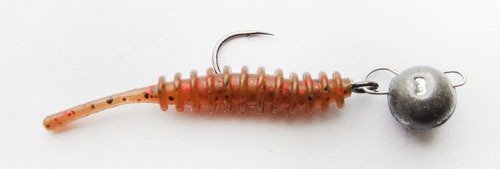
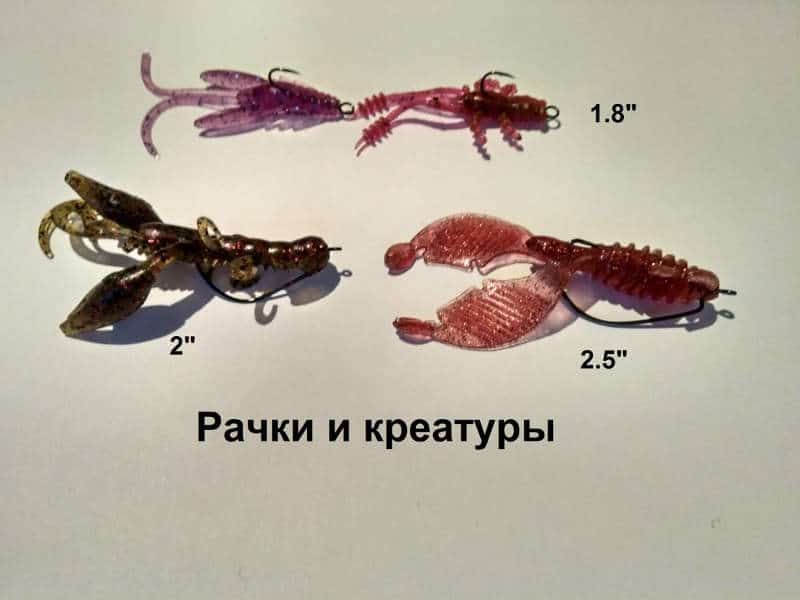
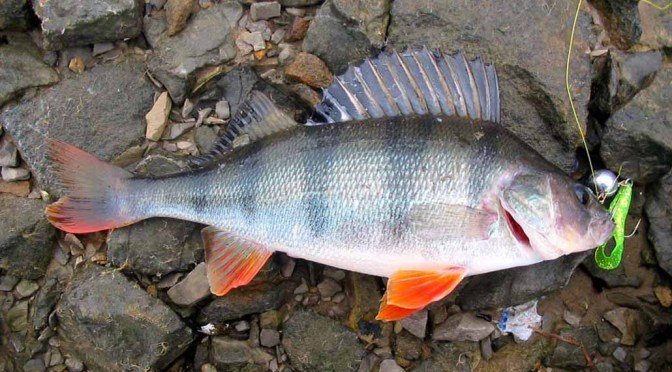
Top 10 best vibrating tails for perch
Disclaimer. Do not take our recommendations for choosing specific baits as a dogma. These jig lures work for perch in our company (the middle strip of Ukraine, Russia and the CIS countries). We believe in them and recommend them to you. As you know, the bait you believe in works.
For the perch, we recommend using vibro-tails, which are efficient and work at the most languid wiring speed, creating a clear and bright game, without failures and falling on its side. Most often these are runny fish (for example, Keitech Swing Impact, Lucky John Tioga, Manns Predator), less often in the form of a shad (like relaxavskaya aqua – this is more pike joy). Various “chopped” vibro 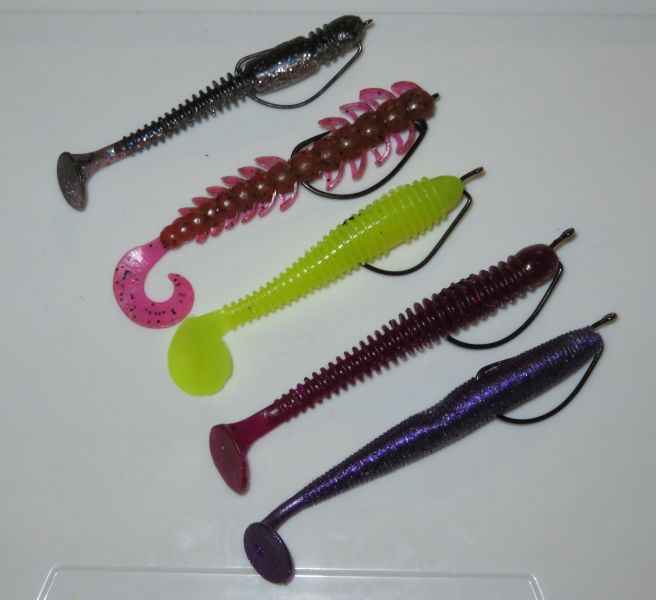
TOP-10 of the best vibrotails for 2020, which work for small (in appropriate sizes), medium and large perch:
- Keitech Swing Impact 2-3 inches.
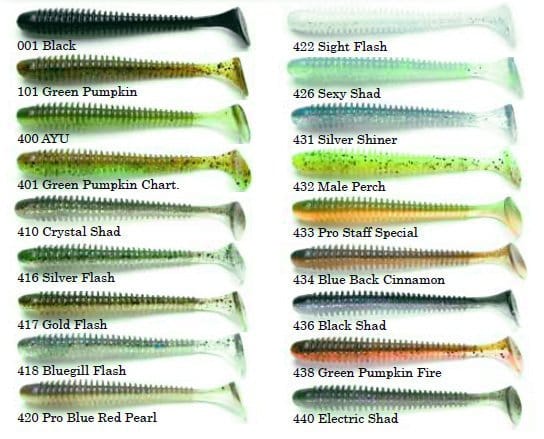
- LJ Baby rockfish 1.4.
- Reins rockvibe shad 2-4.
- Crazy Fish Vibro worm 2-4.
- Pontoon21 Awaruna 2-3.
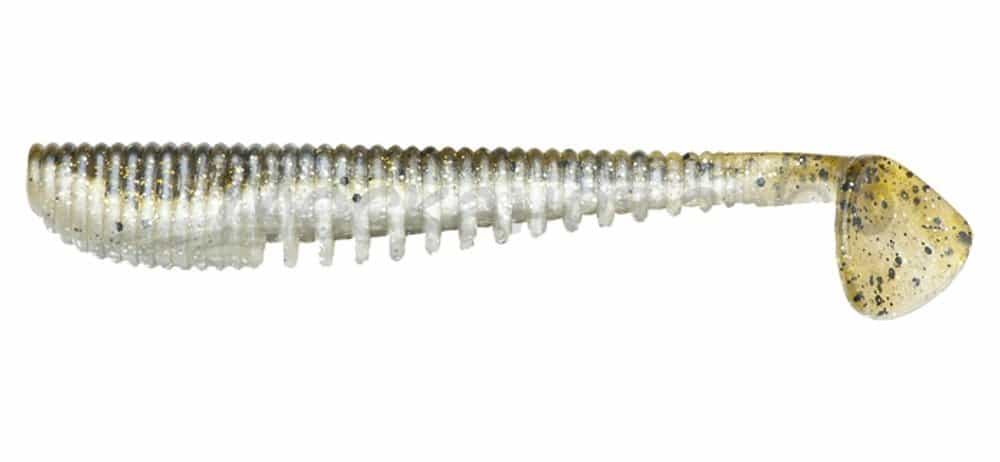
- Relax Kopyto 1.5-3 (inedible classic).
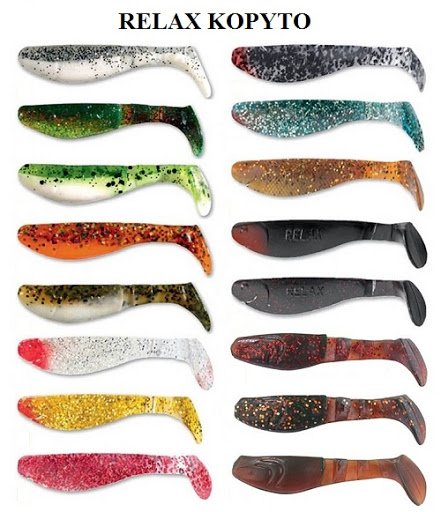
- Sawamura One’Up Shad 2-4.
- Lucky John TIOGA 2.9, 3.4.
- ROCKY FRY Vib-Tail 2, 3.
- Manns Assassin / Predator (inedible classic).
Best perch twisters: top 10
Twisters are great at catching sailors. Our preferences for this type of bait:
- Bait Breath Micro Grub.
- Bait Breath Curly Grub.
- Gary Yamamoto Grub.
- Reins G-Tail Grub.
- Reins G-Tail Grub FAT.
- Gunki Scatter-W 45.
- Bait Breath Bugsy.
- Reins Rockvibe Saturn.
- Reins G Tail Twin.
- Twisters Relax and Mance (inedible classics).
https://youtu.be/zjQ64cYvEIs The following types of lures are used exclusively in an edible version.
The best crustaceans
Crustaceans are a favorite delicacy of the striped red-feather handsome, especially good in summer and early autumn. We recommend the following crayfish for perch fishing:
- Bait Breath Mosya 2 inches.
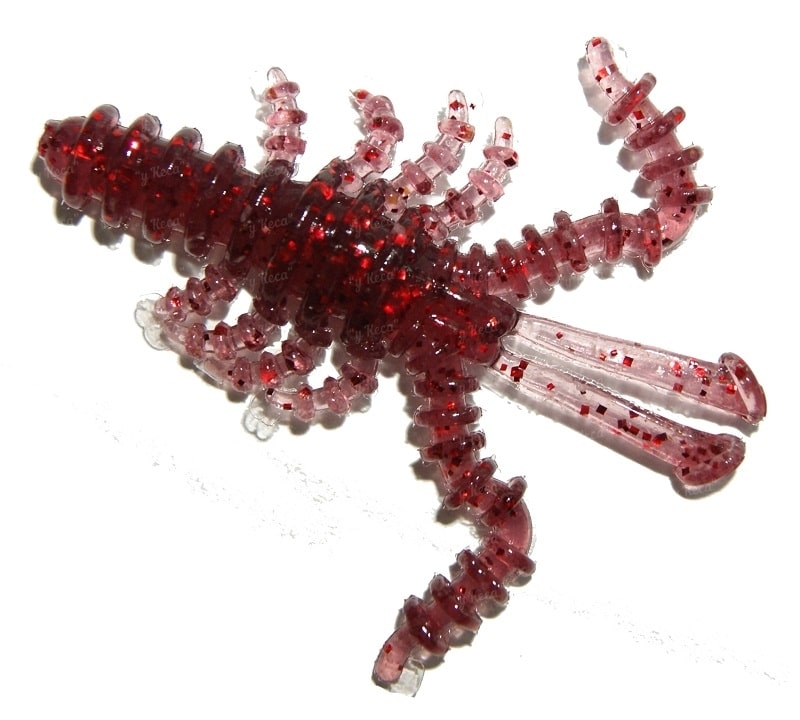
- Bait Breath Rush Craw 2, 2.8.
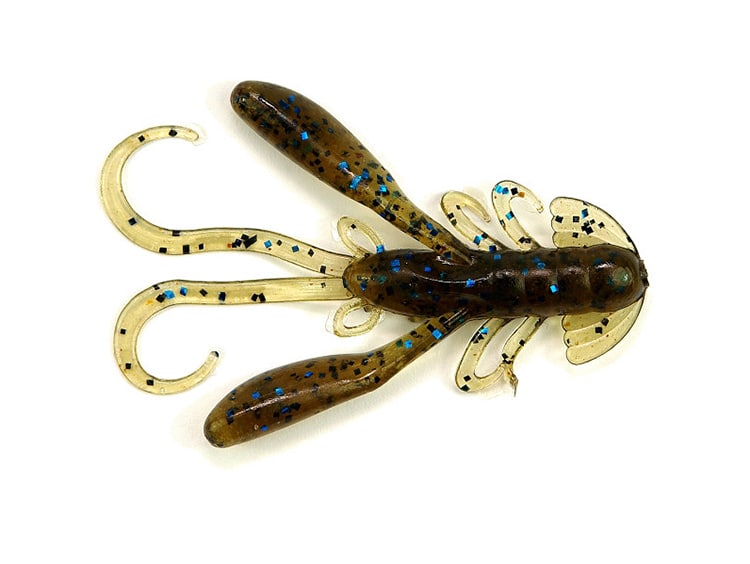
- Reins AX Craw Mini 2.
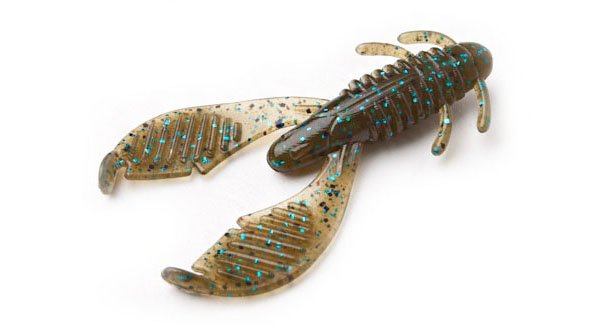
- Reins Ring Shrimp 2.
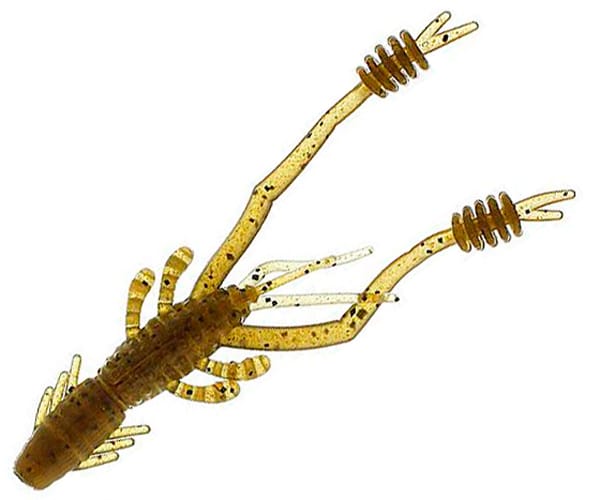
- Keitech Crazy Flapper 2.8, 3.6.
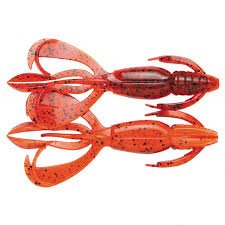
Catchy worms / slugs
Passive edible rubber without its own game, works on the same perch. Various drags with pauses and rather long ones are good, playing in the water column with minimal weights and on spaced rigs, as well as on waky rigs – the bait is threaded in the middle across the body. Perch does not pass by the following slugs:
- Bait Breath Fishtail 2, 2.8 inches.
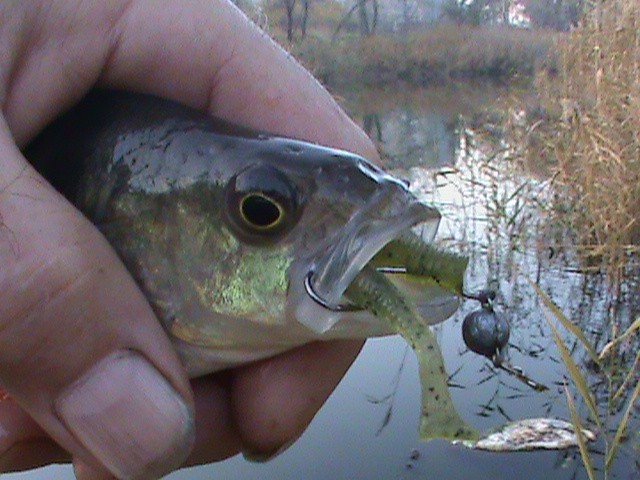
- Imakatsu Javastick 2-4.
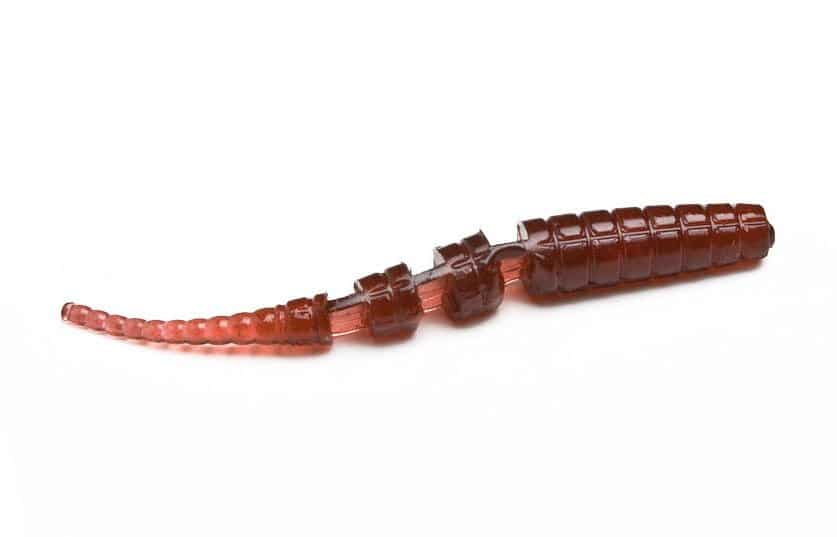
- Keitech sexy impact 2.8-3.8.
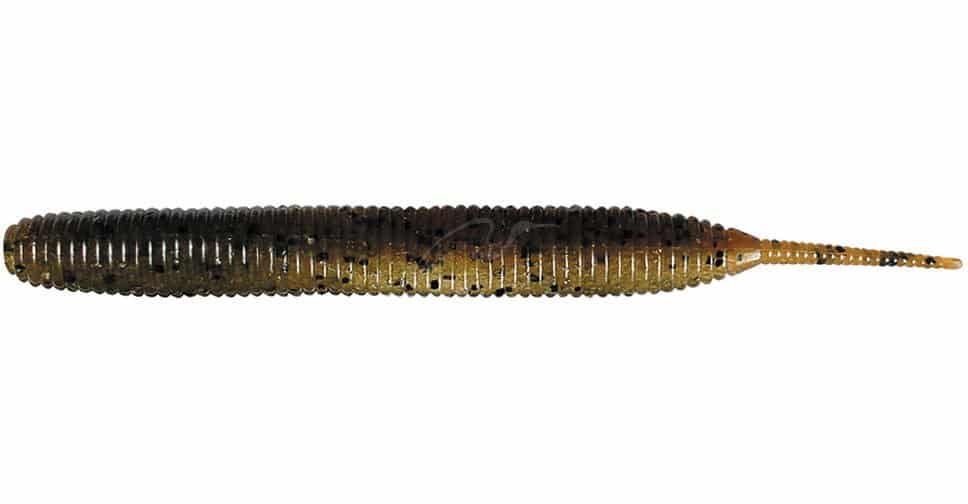
- Keitech Shad Impact 2-4.
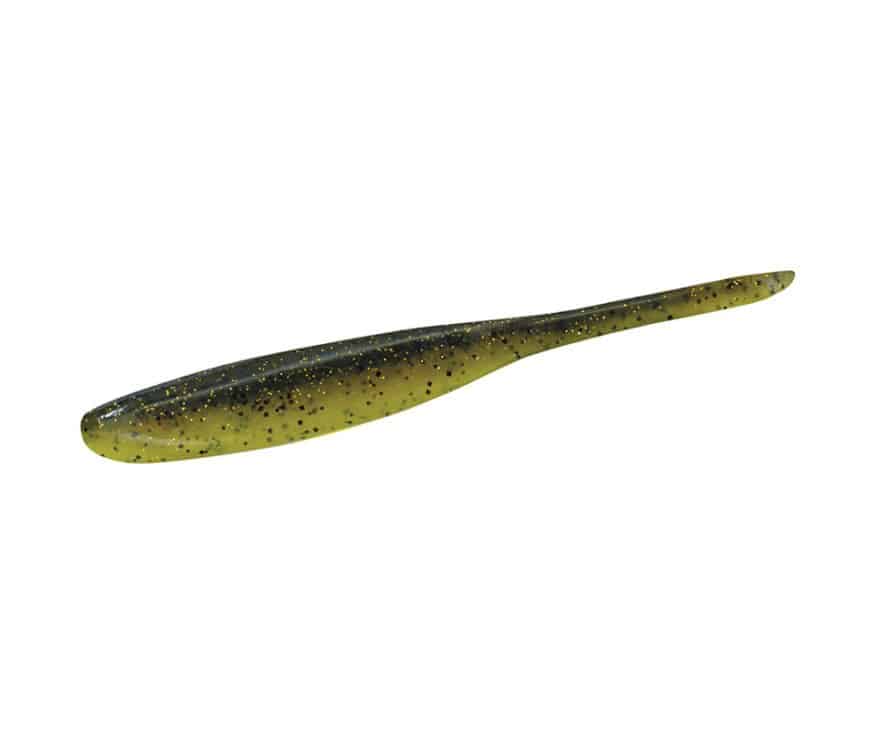
- Reins Aji Ringer 1.6.
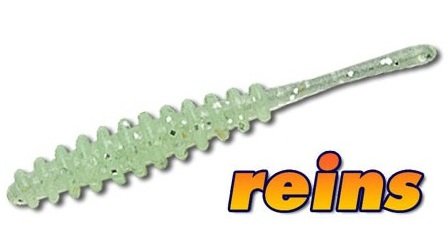
- Crazy Fish Polaris 1.8-4.
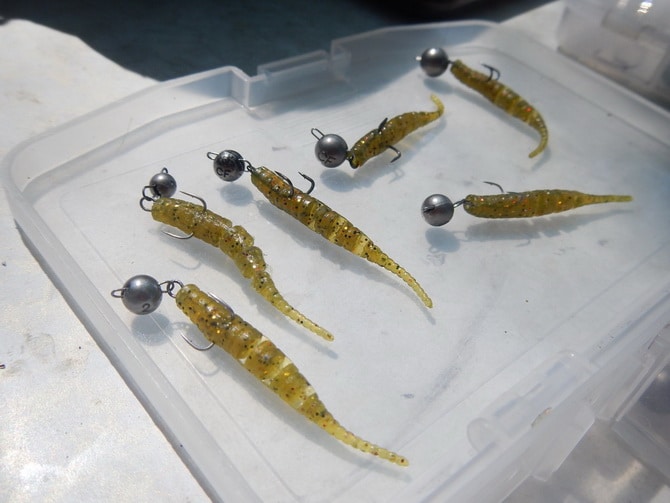
- Fanatik Dager 2.5.
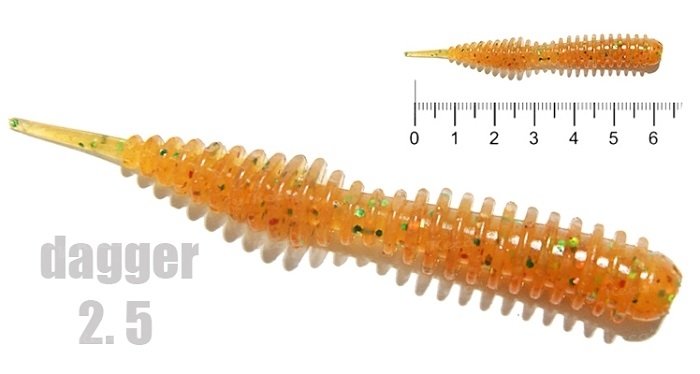
- Bait Breath Needle Real Fry 2.

Nymphs
Nymphs are not the most common, but very catchy rubber for perch, spaced rigs such as drop-shot and diverter showed themselves well. It is worth noting two lures of this type:
- Lucky John Hogy Shrimp 3 ”.
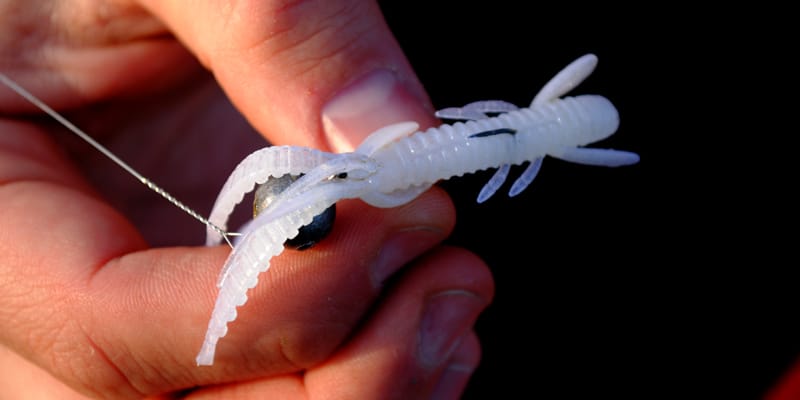
- Lucky John Nayada 2.
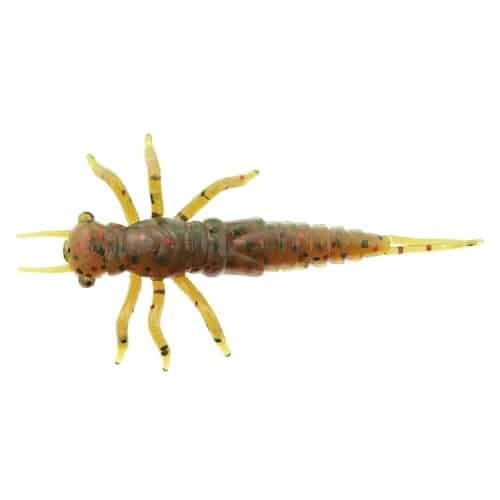
Octopuses
And one more extravagant type of silicone bait that successfully catches a predator:
- Reins Ring Tube Micro 1.5 ”.
- Gary Yamamoto Tiny Ika 3.
- Big Bite Baits Slab Tube 1.75.
- Keitech Little Spider 2.
- Bait Breath O-GO-CYU 2.5.
There are also silicone baits in the form of larvae of various beetles and insects, shrimps, flies, dragonflies and other unknown krakozyabrs. All variety can be sorted out for years. One advice – experiment and dare. The best silicone baits for perch, expert opinion:
Jig equipment for perch
There are two main types of equipment for jig lures – articulated on a cheburashka and deaf on a jig head. The first option on the eared eared is more popular for a number of reasons:
- The lure has greater mobility on a cheburashka than on a rigid fixation with a jig head. This gives the rubber additional attractiveness when wiring, a vibrotail or a twister plays very well on such rigs both in the horizontal and vertical components.
- Versatility and interchangeability . Modern Cheburashkas can be easily and quickly changed by setting the desired weight and shape, without changing the bait itself.
- The floating rubber on the Cheburashka at the bottom takes the pose of a feeding fish, which additionally provokes an attack.
- It is possible to use as a hook – offset hooks, doubles and tees, single crochets with a wide ear.
There is such a truth – the lighter the weight of the load, the better the bait plays on the jig head, the larger it becomes, the better the game on the articulated hitch.

Hinged mounting of vibro-tails on an eared sinker of various shapes – on a double to reduce the number of descents and on offset arms for tight-fitting places
Rigid mounting
Spaced snap
Spaced rigs when fishing for perch on silicone are used in cases where the usual ones are not effective, or their use is simply impossible. Since there are quite a few such rigs, we will consider the goals and features of their use in detail in the following articles, but now, briefly and briefly for a general understanding:
Drop shot
An interesting version of the rig, in which the bait and the load are spaced apart, but on the same vertical. It is good to use on a passive bottom perch in the variant of wiring: pulling the load along the bottom – animation with a bait in almost one place – a pause with attenuation – a repeat of the stage.
Texas snap on the perch
Texas is used in sturdy encircled places. A variation of the rig on the offset hook, only using a bullet weight.
Carolina perch rig
A variant of the Texas one, but with spaced cargo and bait. For fishing in difficult conditions and for passive fish at the bottom.
Jig-rig ( tokyo-rig in Japan, rigging chupa chups in the CIS ) for perch
Relatively new equipment in the CIS and the Russian Federation. It differs from mounting on an eared one in that an additional component is added to the game when falling and when hitting the bottom. What is important with passive fish.
Diverter leash
It makes sense to use it when fishing is carried out at great depths and it is necessary to use a heavy load, which, with a direct hitch, will completely deprive the bait of the game.
When rigging, it is extremely important to maintain the “bait-load” balance, otherwise the silicone will simply stop playing, this is especially true for active baits.
How to jig a perch: find and watch out for
It is important to find a perch, especially in a new water area, and know exactly how to feed him the bait. What to do if there are no boilers on the surface, and fishing is going on in a new unknown place? In new vast waters, when fishing for perch from the shore, we use the fan technology, in which we divide the fishing sector into equal 10 parts and in each of them we make 2-3 casts at different depths of the wiring (bottom, bottom, in the water floor) in search of active fish … Then, if this method did not give the desired result, we begin to search for promising places – dumps and drops in depths, edges, any patches on the bottom, debris of a snag. Animation is a very important point when catching sailors, especially moderate ones. There are quite a lot of used postings, but the most working perch are as follows:
- Uniform . Standard, used for actively playing vibrotails, twisters, some crustaceans and octopuses.
- Wave-like . It is conducted either at the bottom or in the water column. The wave is imparted by smooth acceleration / deceleration of the coil rotation. You can finely tweak the bait with the tip of the rod – it won’t get any worse.
- Trembling . Perch loves a small-amplitude game of bait, and therefore this type of animation is quite effective for itself. Pisses off even a passive sluggish predator. The shaking is set by small and frequent jerking of the rod tip.
- Spinning the bait . Undermining with a reel or spinning rod is sharp, but not very amplitude, and then a smooth broach with the rod upwards – the bait moves slowly and at the same time falls, as if duplicating the bottom of the reservoir, hovering over it.
- Classic jig step . 1-3 turns of the coil – pause – 1-3 turns of the coil – pause, most often with the bait falling to the bottom. We apply smooth, sharp turns and variations on the theme.
- Dragging along the bottom with pauses . The bait, most often passive, drags along the bottom with the rise of turbidity. Pauses are required. For a passive predator – that’s it.
- Double and triple toss . The throws are made with the rod one after the other, at this time the slack is taken out by the reel. On this kind of animation, it is better to use articulated rigs. The variability of this type of animation is both a plus and a minus. You can vary the number, strength of explosions, the pause between them, as well as the speed of picking up the slack in the cord.
- Single toss . A variation of the previous one. Something like a wavy, but sharper at the end and start point of one animation interval.
Spring
In spring, the water is still cold, and the fish is rather sluggish. At this time of the year, lazy animations are used, without sudden movements. Quite long pauses, up to a minute or more, are often effective. Jig baits of 1.5-3 inches are used. Passive worms / slugs with a strong smell and taste of salt / garlic are good. On spills, floodplains, perch is worth looking for in the middle layers and at the bottom. On rivers we use spaced rigs, jig with eared and soldered ones. The search is carried out at a depth at the bottom, along steep banks on dumps, among the snag. Drop-shot, carolina and texas are very effective at this time.
Summer
In the warm season, the perch is angry and active, but in any case, it is not always easy to find it, and even more so to catch it. In summer, perch is better caught on active jig lures that imitate fry of various whites, or on passive ones, but with animation actively set by the angler. The size is also used more than in the spring – 2.5-4 inches silicone works better and additionally cuts out frank small things. Animation variations – all of the above and their options, based on the fishing conditions. It is a well-known fact that the smaller the perch, the more numerous flocks it gathers, and vice versa. Therefore, there is no point in looking for a decent perch in boilers.
Autumn
Fishing for perch in early autumn (September-mid) is carried out with medium and large jig silicone lures. At this time, he is still quite actively taking on active baits of the type of vibrating hosts-twisters-various cuttlefish. It is worth looking for a measured handsome man in pits, to a depth near the coast, in a snag, on slow rivers and lakes at any depth difference. Spaced rigs are used, on cheburashkas and ordinary jig heads. The size is from 2 to 4-5 inches, depending on the depth, the size of the intended prey, the strength of the current. The wiring is a step, explosions and their variations, wave-like. In late autumn, when the water gets colder, passive worms and slugs work better. Wiring – slow at the bottom, dragging along the bottom with pauses. Size 1.5-3 inches. The rule is simple (theoretically) – in cold water, we use slow postings with passive lures on the perch.On warm – high-frequency animations with active and / or passive decoys.
In spinning fishing, every detail is important – to correctly assemble the tackle, skillfully pick up the bait and feed it to the perch, find a parking spot for this very perch and tempt it to attack. All this comes with experience, and any recommendations, including ours, will only allow you to fill fewer bumps when purchasing it.
